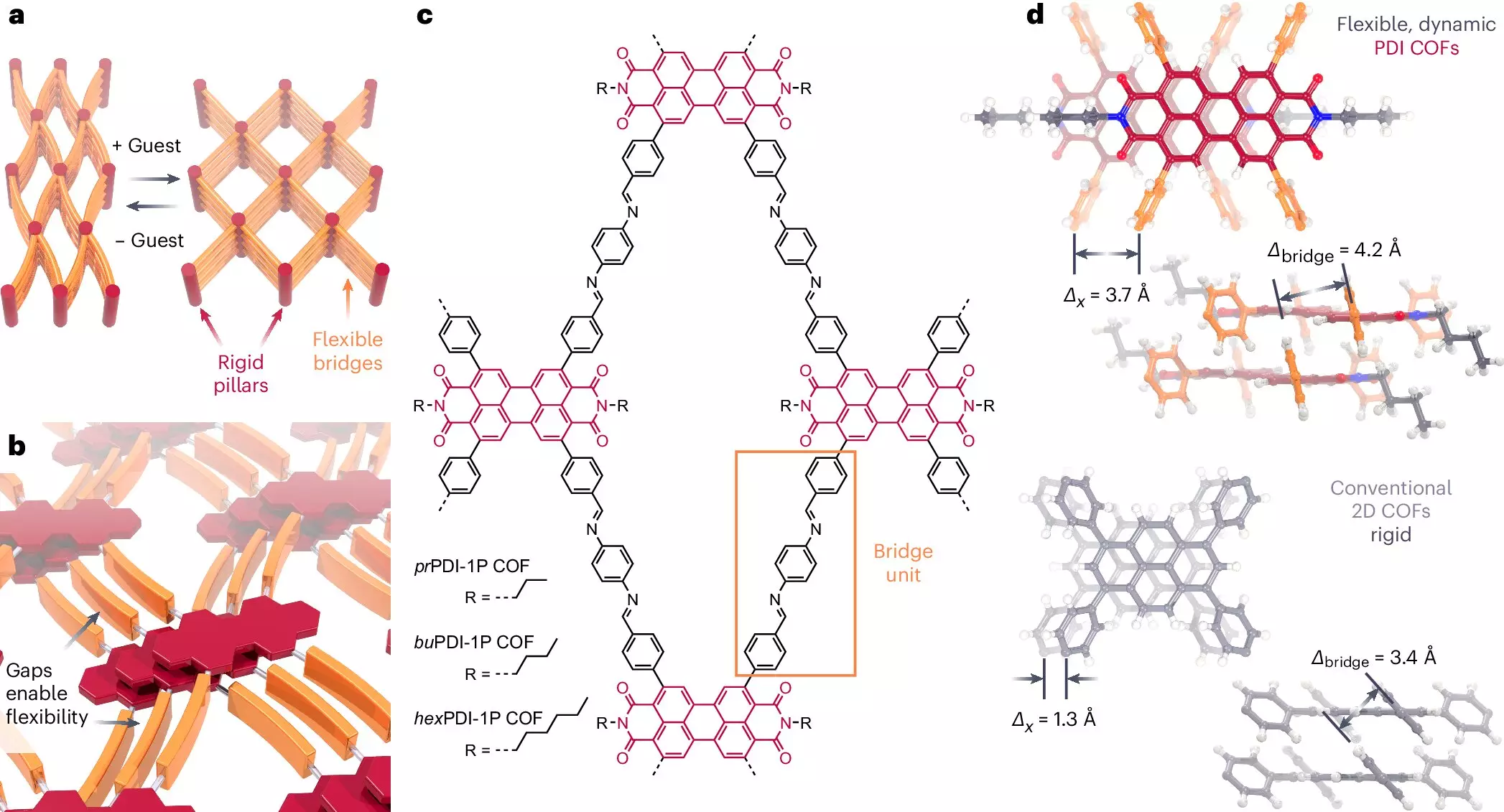In an exciting development in material science, a team spearheaded by Dr. Florian Auras at the Dresden University of Technology has made significant advancements in the burgeoning field of covalent organic frameworks (COFs). This team has birthed a novel two-dimensional polymer whose properties can be precisely and reversibly manipulated. This innovative leap not only showcases the elegant interplay between molecular design and practical application but may also bring us closer to harnessing switchable quantum states—an exhilarating prospect for both theoretical research and practical implementation.
The Essence of Covalent Organic Frameworks
Covalent organic frameworks are a class of materials defined by their highly ordered porous structures, formed through organic molecules interconnected via covalent bonds. This unique architecture allows for the crafting of materials with unprecedented precision, advancing our capabilities in multiple fields including gas and liquid storage, catalysis, and sensor technology. Historically, research within this domain has fixated on developing static frameworks characterized by rigidity. This focus, while valuable, has overlooked the potential of dynamic frameworks that can alter their structural properties in response to environmental stimuli.
Dynamic Frameworks: The Next Frontier
Dr. Auras and his collaborative team have shattered the paradigm of static COFs by proposing a groundbreaking design approach that allows for dynamism within these materials. Their strategy equips the highly ordered frameworks—typically known for their rigidity—with a necessary flexibility, akin to a sponge that expands and contracts based on external forces. This has injected a new vigor into the study of COFs and opened up a landscape of potential applications in electronics and beyond. By introducing solvents into the molecular framework, the team can induce morphing behaviors, temporally altering not just the physical structure but also the optical characteristics, including color and fluorescence. Such a discovery could lead to robust applications in technologies requiring advanced sensory inputs or data transmission.
Applications in Electronics and Information Technology
The implications of these findings are expansive, especially in the realms of electronics and information technology. As we move deeper into an era characterized by rapid technological advancement and an ever-increasing need for sophisticated data processing tools, materials that can shift properties on demand stand to revolutionize the industry. Imagine devices capable of not only housing information but also adapting to changes in their environment. The newfound ability to toggle property states could be the key to more efficient and versatile electronic systems.
The Future of Stimuli-Responsive Polymers
Dr. Auras’ insights reflect an enthusiastic drive towards the next steps in research, particularly in the exploration of stimuli-responsive polymers. By creating materials that can respond to external stimuli—either mechanical, thermal, or chemical—we stand on the precipice of a new era in material science. The quest for switchable quantum states, a holy grail in the field, is now equipped with a foundation that could propel further research and application forward. Each experiment brings with it the tantalizing promise of technological transformation, fueling excitement and anticipation throughout the scientific community.
In a world increasingly dependent on innovation, the work being done on covalent organic frameworks beckons as a beacon of possibility. This is a moment for curious minds to delve into the uncharted territories of material science, exploring how molecular manipulation can not only reshape physical structures but also the very technologies that underpin our modern lives.


Leave a Reply